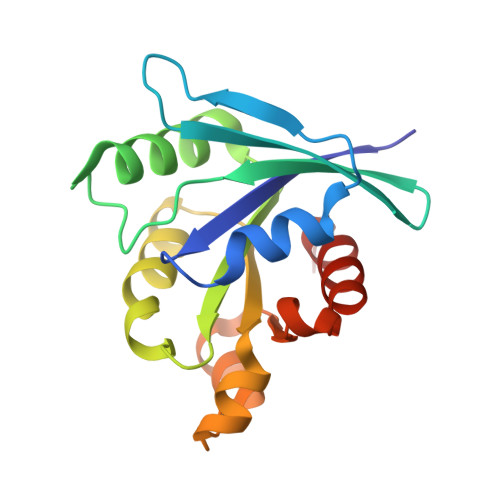Structure and Function of the Feob G-Domain from Methanococcus Jannaschii
Koester, S., Wehner, M., Herrmann, C., Kuehlbrandt, W., Yildiz, O.(2009) J Mol Biol 392: 405
- PubMed: 19615379
- DOI: https://doi.org/10.1016/j.jmb.2009.07.020
- Primary Citation of Related Structures:
2WJG, 2WJH, 2WJI, 2WJJ - PubMed Abstract:
FeoB in bacteria and archaea is involved in the uptake of ferrous iron (Fe(2+)), an important cofactor in biological electron transfer and catalysis. Unlike any other known prokaryotic membrane protein, FeoB contains a GTP-binding domain at its N-terminus. We determined high-resolution X-ray structures of the FeoB G-domain from Methanococcus jannaschii with and without bound GDP or Mg(2+)-GppNHp. The G-domain forms the same dimer in all three structures, with the nucleotide-binding pockets at the dimer interface, as in the ATP-binding domain of ABC transporters. The G-domain follows the typical fold of nucleotide-binding proteins, with a beta-strand inserted in switch I that becomes partially disordered upon GTP binding. Switch II does not contact the nucleotide directly and does not change its conformation in response to the bound nucleotide. Release of the nucleotide causes a rearrangement of loop L6, which we identified as the G5 region of FeoB. Together with the C-terminal helix, this loop may transmit the information about the nucleotide-bound state from the G-domain to the transmembrane region of FeoB.
Organizational Affiliation:
Department of Structural Biology, Max Planck Institute of Biophysics, Frankfurt am Main, Germany.

















